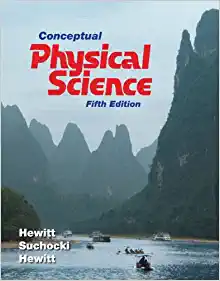Question
Conduction & Convection Enjoying an ice cream cone on a summer day often becomes a race between the rate of ice cream consumption and the
Conduction & Convection
Enjoying an ice cream cone on a summer day often becomes a race between the rate of
ice cream consumption and the rate of ice cream melt. But does ice cream melt faster on a
windy day or when the air is still? Will it melt more slowly if you walk, or if you stand still?
This is the question that you will answer in this assignment. And you will do so by means
of a controlled experiment that you will design, perform, and interpret.
You may be tempted to immediately look up the answer to this question on the Internet.
Please don't do so... at least not yet. You will get much more out of this assignment if
you \discover" the answer for yourself instead of short-circuiting the intended learning
process. It may reassure you to know that the answer to the question isn't the important
part of this exercise.
Context, Background, & Theory
A solid object melts when its temperature rises above the melting point of the material
from which it is made. Recalling that temperature is a measure of the average thermal energy
per molecule, melting occurs when that average thermal energy per molecule is sucient to
overcome the chemical bonds that otherwise prevent molecules from moving very much
relative to one another. So, to melt, a solid must rst absorb enough thermal energy.
As explained in your textbook, heat (thermal energy) can be transported via three mech-
anisms: conduction of heat within a material or across the boundary between two materials
in physical contact with each other; convection that moves a mass of uid and so carries
away the thermal energy contained in it (often driven by density dierences - so-called natu-
ral convection), and electromagnetic (EM) radiation emitted from the surface of an object
because of its temperature. The radiation mechanism will be the subject of a future assign-
ment. For the present task, it is the mechanisms of conduction and convection which require
closer examination.
NOTE: In the discussion that follows a small amount of math-like notation is used to
precisely describe conduction. Don't worry about that math and instead focus on the
qualitative description of which factors govern the scale of heat
a) Heat Transfer - Conduction
Conduction occurs when heat ows from higher temperature regions to lower temperature
regions, both inside a single material and across boundaries. Suppose a cold frying pan is
placed on a hot surface. Heat rst ows across the boundary from hot to cold, increasing
the temperature of the bottom side of the pan (see Fig. 1). And, as soon as the temperature
of the bottom of the pan increases compared to the top surface, heat ow begins within the
pan itself, eventually increasing the temperature of the top surface (see Fig. 2).
However, the ow of heat in a material isn't instantaneous. The time rate at which
heat ows between two regions is proportional to the dierence in temperature. It is also






Step by Step Solution
There are 3 Steps involved in it
Step: 1

Get Instant Access to Expert-Tailored Solutions
See step-by-step solutions with expert insights and AI powered tools for academic success
Step: 2

Step: 3

Ace Your Homework with AI
Get the answers you need in no time with our AI-driven, step-by-step assistance
Get Started


